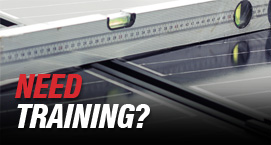
Deng Solar Product Range
PV-Direct Systems
These are the simplest of solar-electric systems, with the fewest components (basically the PV array and the load). Because they don’t have batteries and are not hooked up to the utility, they only power the loads when the sun is shining. This means that they are only appropriate for a few select applications, notably water pumping and ventilation—when the sun shines, the Fan, Fridge or Pump runs.
Off-Grid Systems
Although they are most common in remote locations without utility service, off-grid solar-electric systems can work anywhere. These systems operate independently from the grid to provide all of a household’s electricity. These systems require a battery bank to store the solar electricity for use during nighttime or cloudy weather, a charge controller to protect the battery bank from overcharge, an inverter to convert the DC PV array power to AC for use with AC household appliances, and all the required disconnects, monitoring, and associated electrical safety gear.
Grid-Connected Systems
These PV systems are also known as on-grid, grid-tied, utility-interactive, grid-intertied, or grid-direct. They generate solar electricity and route it to the loads and to the electric utility grid (AC Appliances), offsetting a home’s or business’s electricity usage. System components are simply comprised of the PV array (Panel or Module) and an Inverter(s), and required electrical safety gear (i.e., fuses/ breakers/ disconnects). Living with a grid-connected solar-electric system is no different than living with utility electricity, except that some or all of the electricity you use comes from the sun to help reduce tariffs from ECG. (The drawback of these battery less systems is that they provide no outage protection—when the utility grid fails, these systems cannot operate without ECG.)
Hybrid Systems
This type of system works as a grid connected system combined with an off grid system. It works by feeding the load (consumption) first and the excess power will then be charging the battery bank - this is regardless of main grid availability. If there is grid available and there is still excess power available from the PV array, after feeding the load and the battery bank it will also be feeding back into the grid (ECG). The system can also charge the batteries from the grid when the sun is down to still have power if the grid goes off again before the sun is up. The main feature is that the PV array will keep producing power to the load (consumption) even when the main utility grid is off and that it has a battery backup system to power the load when main power and the PV is not available.












